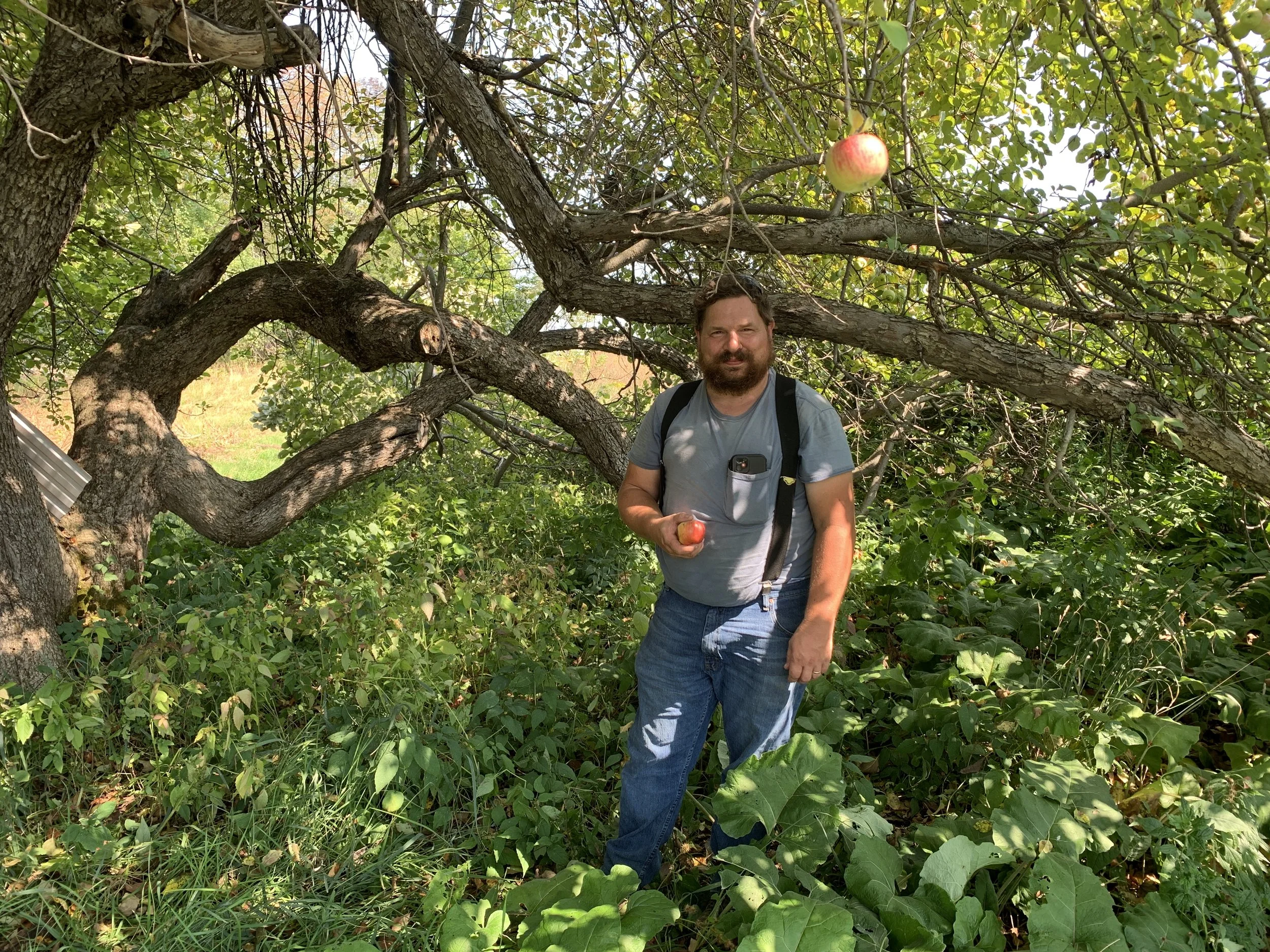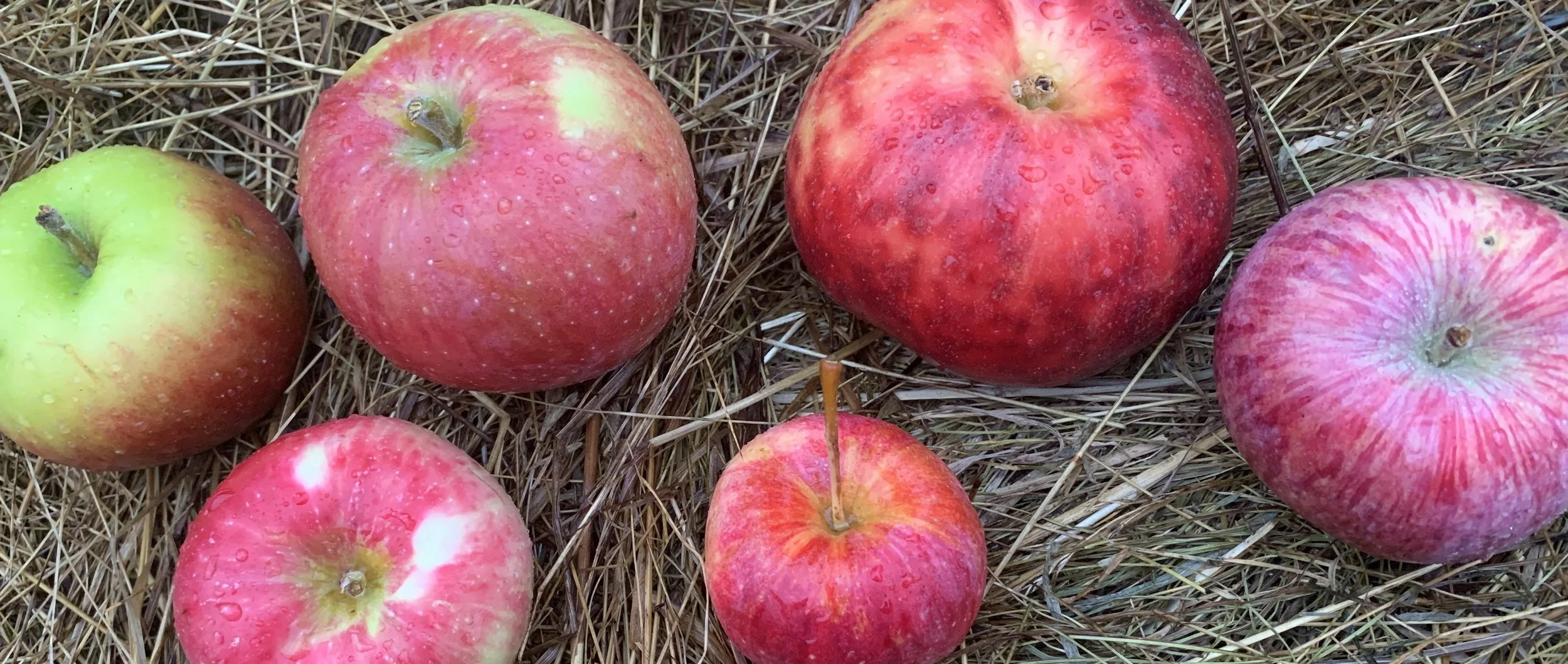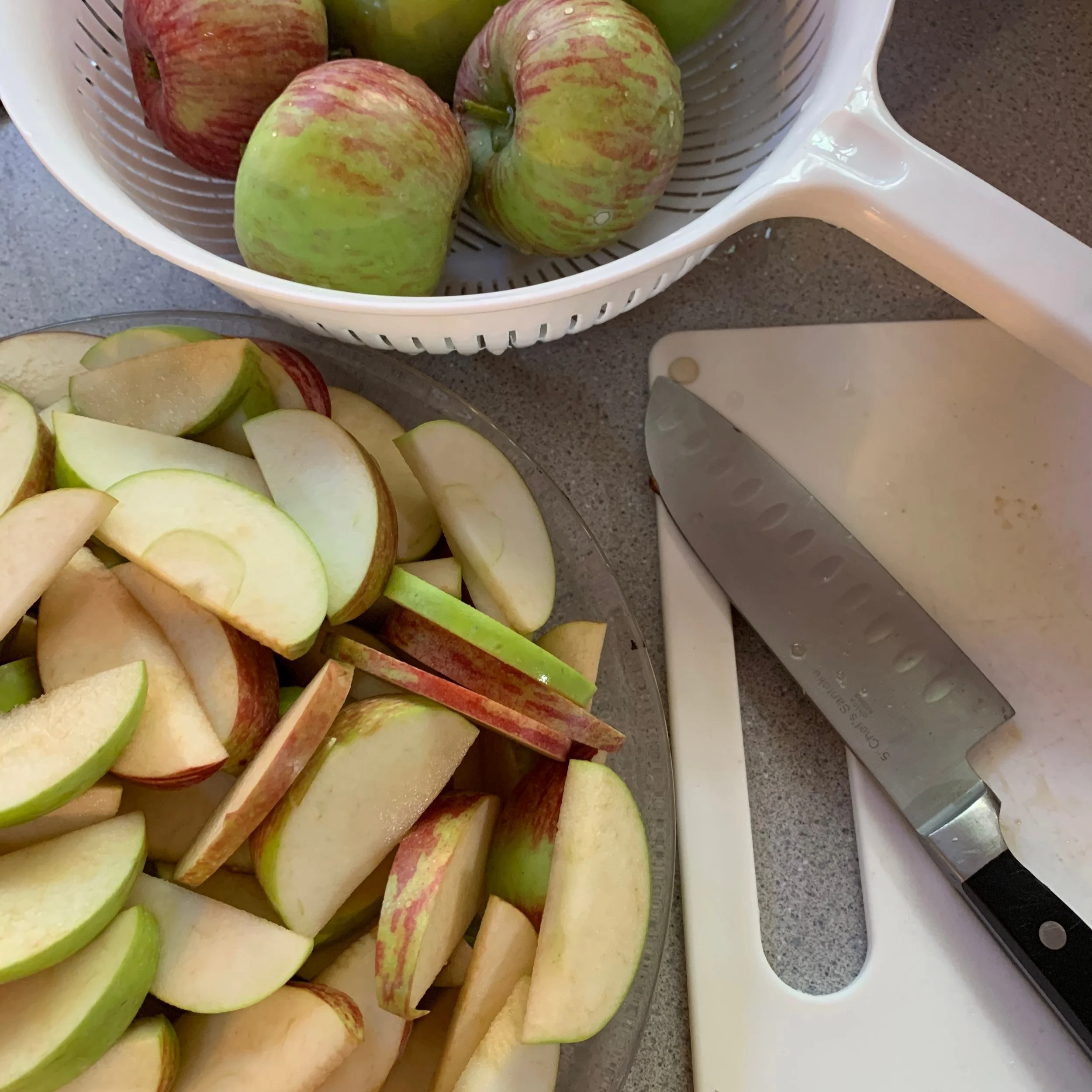Ernest Rollins enjoying the shade under his massive Royal Sweet tree. The tree is surrounded by an armed regiment of burdock and motherwort sentries that keep all 2 and 4-legged marauders at bay. Even the apples on the heavily laden branches that bent to the ground were untouched. (The OOAL harvest crew that braved the burdock itched for several days.)
Are you going to….
COMMON GROUND FAIR. After a two year, covid-induced hiatus we are excited that the Fair is returning to full strength next weekend at the MOFGA fairgrounds in Unity. Yes, there will be interesting talks, beautiful crafts, organic food, animal and equipment demos and a hall full of crazy-looking vegetables. But for us the Fair is more about community; it’s a place for young and old to gather, to share, to dance and to celebrate. It’s a place where tradition meets innovation in the best possible way. And of course we love it because it brings together apple geeks from all over New England who come to swap stories, get apples identified, taste and swoon over their favorite fruit for three days. The apple love fest takes place amid the apple display at the Hayloft Tent. There you can view 100’s of varieties that grow in Maine, ask the Fedco Trees staff questions about purchasing and growing fruit, arrange a tour of the Maine Heritage Orchard, and talk apples with John and the local band of merry fruit explorers who hang out at the booth. You can also bring apples from ANCIENT trees to be identified. If you do bring apples, here are a few tips:
The apple excitement factor among the fruit explorers will increase in direct proportion to the age, diameter and disrepair of the trunk of the tree (see the picture above for an example of a maximum excitement tree)
Bring them in a paper (not plastic ) bag
Include 6-7 specimens from each tree
Bring some pictures of the tree, especially the base of the trunk.
The Hayloft Tent is also the place where you can get your fill of apple talks. For a list of topics and speakers, click here. If you are interested in DNA profiling of apples or in the ins and outs of cider apples, we recommend the talks by Cameron Peace of Washington State University. Cameron is leading the group that John has been working with to determine the genetic signature of apple cultivars and their family trees. If you have the stamina to survive the crowds til 4:00, join John and his friend Sean Turley for an apple tasting where you can raise a russet ruckus as you vote for your favorite. (You’ll find two of the perennial winners in your share bag this week.)
See you at the Fair.
Picks of the week:
(Click each variety for more info)
Braving the burdocks to reach a another Royal Sweet.
We are excited to offer Sweet Royal in your share this week for the first time. It is an apple shrouded in both history and mystery. Years ago John was visiting Rollins Orchard in Garland, ME, when Ernest Rollins asked if he would like to see the oldest tree on the farm. John had been to the orchard many times, but he had never explored the hill at the back of the farm. Ernest led him through the fields to a massive apple tree, 60’ in diameter and 180’ in circumference. John was bowled over; he had never seen such a large apple tree in Maine. Ernest’s family has lived on the property for over 200 years, but there is no record of what this variety was called. Through some sleuthing, John was able to match the fruit visually with a watercolor in the USDA collection created in the early 20th century. The specimen used as a model for the painting was submitted by J.M. Stone from Garland, ME. He identified the apple as Royal Sweet. We will likely never be able to say conclusively that the apples are one and the same, but we are provisionally calling Rollins’ apple Royal Sweet. If they are the same, it is likely that the tree we picked your apples from this week is the original “mother” tree. When we asked Ernest for some old family recipes, he looked confused. “We never cook these, they are too good fresh eating”.
Other apples in the share may be more familiar to longtime shareholders, but several of them come with their own mysteries. For instance, where did Canadian Strawberry originate - did the Davis Family bring the scion wood with them from Acton, MA, did it originate on their farm in South Solon, ME, or did it travel to Maine from NY? Why have we never found another reference to this apple in any book, periodical or agricultural report or any other specimens in Maine? And Gravenstein, the only apple that we know of that was brought to both coasts of the US nearly simultaneously - is it the same as the late 16th century apple Ville Blanc, a German apple called Gravens Apfel or a Russian import? St. Lawrence comes with a mystery as well - is it a child of Fameuse or a parent of Mac? DNA analysis is helping us to unravel some of these mysteries, but as it peels back one layer, it exposes more questions.
Apples wave their stars and stripes proudly this week. We salute them for their beauty and their flavors.
As we work to sleuth out the ancestries and stories of these apples, you can solve the mystery of taste on your own by biting in. All of these apples stand up convincingly to fresh eating. Canadian Strawberry and the diminutive Chestnut Crab are wonderfully flavorful, crunchy and complex. Royal Sweet, as Ernest Rollins assured me, is the perfect apple for anyone with a sweet tooth. There must be a touch of tartness hidden in there somewhere as it doesn’t deliver the distinctive, odd flavor of most apples that bear the “sweet” moniker. Eat them out of hand or add them to anything that calls for fresh, uncooked apples. St. Lawrence, Gravenstein and Smokehouse are considered all-purpose varieties. They make excellent sauce, and the latter two will stand up well in a pie. As summer rolls into fall, we bring you the best of the season.
Our apples come to you straight from the tree, so, as with all fresh produce, please be sure to wash them thoroughly before eating. Some of the apples are grown using Integrated Pest Management by the orchards we collaborate with throughout Maine, and some are organically grown here on Super Chilly Farm.
Recipe of the Week
Sweet Potato, Apple and Ginger Soup
Cooler temperatures cry out for soup, something I’ve avoided making all summer. So I searched through my stash of apple recipes for a soup that I hadn’t tried before. In The Apple Lover’s Cookbook by Amy Traverso one recipe caught my eye. Unlike most recipes in the book that specify a variety or type of apple, this recipe claimed to be delicious with any and all apples. As I dug a bit deeper into the directions, however, I saw that Amy had added a note - that although any apple would do, a SWEET apple would do best. Now I’m sure Amy didn’t have Royal Sweet in mind when she mentioned sweet, but that didn’t stop me from giving it a try. If you don’t eat them all fresh, you might want to throw a few in this soup as well. The sweet potatoes are a subtle but pleasing change from the more common butternut squash recipes that we really enjoyed. Since I didn’t have any sweet cider on hand, I threw in 1/2 cup of dry, hard cider. This probably meant that the soup was not as sweet as intended, but it appealed more to our tastes. If you prefer your soups to be less sweet, then take a “taste-as-you-go” approach when you add the cider. Vary the amount of ginger you put in to suit your spice tolerance.
Ingredients:
St Lawrence slices waiting for a pie crust.
1 pound sweet potatoes, peeled and cut into 3/4” cubes
1/2 pound carrots, peeled and chopped
2 large sweet apples, cored and cut into 1” chunks
5 Tbs olive oil
1.5 tsp kosher salt
1/2 tsp freshly ground black pepper
1 medium yellow onion, diced
1”-2” piece of ginger, peeled and cut into chunks
3 garlic cloves, coarsely chopped
1 bay leaf
4 cups chicken or veggie stock (if you use store-bought stock, make sure it is low sodium)
1/2 cup fresh apple cider or dry hard cider
Directions:
Preheat oven to 400°. In a medium bowl toss the sweet potato, carrot and apple with 3 Tbs olive oil, 1 tsp salt and 1/4 tsp black pepper. Arrange on a baking sheet and roast about 30 minutes or until tender.
While they are roasting, add the remaining olive oil to a large pot, and set over medium-high heat. Add the onion, garlic, ginger, bay leaf, 1/2 tsp salt and 1/4 tsp pepper. Cook until the onions begin to turn golden, about 8-10 minutes. Add the roasted vegetables, stock and cider, and bring to a simmer. Reduce heat to low, cover and simmer for 30 minutes.
Remove the bay leaf, and puree the soup with an immersion or regular blender until smooth. If you are using a regular blender, do the pureeing in three smaller batches to avoid covering yourself with soup.
Return the soup to the pot. If the soup is too thick for your tastes, add water or more stock to thin it out. (I added 3 cups of water.) Reheat, adjust the seasonings, and serve.




